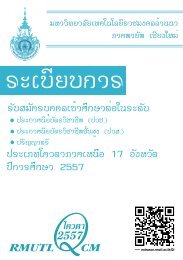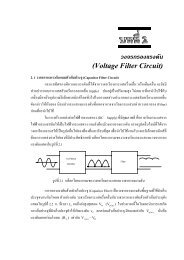Sampling and Reconstruction of Analog Signals
Sampling and Reconstruction of Analog Signals
Sampling and Reconstruction of Analog Signals
You also want an ePaper? Increase the reach of your titles
YUMPU automatically turns print PDFs into web optimized ePapers that Google loves.
<strong>Sampling</strong> Principle<br />
• A b<strong>and</strong>-limited signal x a (t) with b<strong>and</strong>width F 0 can be<br />
reconstructed from its sample values x(n)=x a (nT s ) if the<br />
sampling frequency F s =1/T s is greater than twice the<br />
b<strong>and</strong>width F 0 <strong>of</strong> x a (t) ,<br />
F s >2 F 0 .<br />
• Otherwise aliasing would result in x(n). The sampling rate <strong>of</strong> 2<br />
F 0 for an analog b<strong>and</strong>-limited signal is called the Nyquist rate.<br />
• After xa(t) is sampled, the highest anal og frequency that x(n)<br />
represents is Fs/2 Hz (or ω = π)




